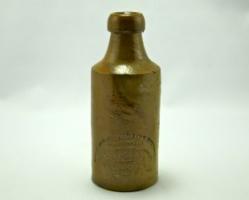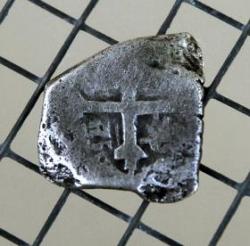- 26 AOÛT
- INDI-UNI : 
PRE-INSCRIPTION : 15 Juin – 31 Août
PRE-REGISTRATION: June 15th - August 31st
- FRANCE –  La Seyne - En novembre dernier, au cours d’une plongée du côté des Deux-Frères, David Adam fait une intéressante découverte. Ce que le commun des mortels aurait sans doute pris pour un simple pieu en bois, lui y voit immédiatement le jas(Pièce servant à maintenir l’ancre sur le fond marin) d’une ancre antique (photo). Intrigué, ce plongeur chevronné veut en savoir plus. Ni une ni deux, il monte un dossier de mission. « C’est la première fois que je me lançais dans une telle aventure, plaisante le plongeur. Beaucoup de paperasse, le recrutement des équipiers qui n’est pas simple. La législation est draconienne… sans parler des financements quasi impossibles à obtenir ». Le 1er mai, toute l’équipe est fin prête pour trois mois de fouilles intensives. À raison d’une à deux explorations par jour, ils effectuent au total 120 plongées jusqu’à 30 mètres de profondeur. Des dizaines d’amphores de différentes époques et origines ont été découvertes, . Mais aussi, plus surprenant, une zone de tessons de différentes époques ou encore des morceaux d’amphores . Notamment des « Dressel 20 » originaires de Bétique, employés dans cette région du sud de l’Espagne entre le Ier et le Ve siècle de notre ère. Découverte aussi une « ancre grappin » qui pourrait laisser penser qu’une épave médiévale gît par là au fond des mers.
La Seyne - En novembre dernier, au cours d’une plongée du côté des Deux-Frères, David Adam fait une intéressante découverte. Ce que le commun des mortels aurait sans doute pris pour un simple pieu en bois, lui y voit immédiatement le jas(Pièce servant à maintenir l’ancre sur le fond marin) d’une ancre antique (photo). Intrigué, ce plongeur chevronné veut en savoir plus. Ni une ni deux, il monte un dossier de mission. « C’est la première fois que je me lançais dans une telle aventure, plaisante le plongeur. Beaucoup de paperasse, le recrutement des équipiers qui n’est pas simple. La législation est draconienne… sans parler des financements quasi impossibles à obtenir ». Le 1er mai, toute l’équipe est fin prête pour trois mois de fouilles intensives. À raison d’une à deux explorations par jour, ils effectuent au total 120 plongées jusqu’à 30 mètres de profondeur. Des dizaines d’amphores de différentes époques et origines ont été découvertes, . Mais aussi, plus surprenant, une zone de tessons de différentes époques ou encore des morceaux d’amphores . Notamment des « Dressel 20 » originaires de Bétique, employés dans cette région du sud de l’Espagne entre le Ier et le Ve siècle de notre ère. Découverte aussi une « ancre grappin » qui pourrait laisser penser qu’une épave médiévale gît par là au fond des mers.
http://www.varmatin.com/article/la-seyne-sur-mer/recherches-archeologiques-au-large-du-jonquet-a-la-seyne
- CANADA –  Montréal - Les archéologues de la firme Ethnoscop, sous la direction de Pointe-à-Callière, musée d’archéologie et d’histoire de Montréal, ont trouvé une grande quantité d’artefacts et d’ossements lors des fouilles archéologiques menées sur le site du marché Sainte-Anne devenu le parlement du Canada-Uni, sur la place D’Youville Ouest, dans le Vieux-Montréal. Ces objets remplissent déjà 45 bacs, et autant sont encore à prévoir puisque les fouilles vont se prolonger jusqu’à la mi-octobre. Les archéologues effectuent ces fouilles archéologiques dans le cadre du projet d’expansion de Pointe-à-Callière. À cette étape du projet, le travail consiste à documenter le site et vérifier l’état de conservation des vestiges en vue d’une mise en valeur souterraine accessible au grand public d’ici 2017. Les artefacts retrouvés à ce jour sont associés à trois grandes périodes d’occupation du site : celle du marché Sainte-Anne et du parlement du Canada-Uni, soit de 1834 à 1849 ; celle de l’incendie du parlement, le 25 avril 1849 ; et celle de la réhabilitation du marché Sainte-Anne, à partir de 1851 jusqu’à 1901.
Montréal - Les archéologues de la firme Ethnoscop, sous la direction de Pointe-à-Callière, musée d’archéologie et d’histoire de Montréal, ont trouvé une grande quantité d’artefacts et d’ossements lors des fouilles archéologiques menées sur le site du marché Sainte-Anne devenu le parlement du Canada-Uni, sur la place D’Youville Ouest, dans le Vieux-Montréal. Ces objets remplissent déjà 45 bacs, et autant sont encore à prévoir puisque les fouilles vont se prolonger jusqu’à la mi-octobre. Les archéologues effectuent ces fouilles archéologiques dans le cadre du projet d’expansion de Pointe-à-Callière. À cette étape du projet, le travail consiste à documenter le site et vérifier l’état de conservation des vestiges en vue d’une mise en valeur souterraine accessible au grand public d’ici 2017. Les artefacts retrouvés à ce jour sont associés à trois grandes périodes d’occupation du site : celle du marché Sainte-Anne et du parlement du Canada-Uni, soit de 1834 à 1849 ; celle de l’incendie du parlement, le 25 avril 1849 ; et celle de la réhabilitation du marché Sainte-Anne, à partir de 1851 jusqu’à 1901.
http://www.montrealexpress.ca/Arts-et-spectacles/Activites-culturelles/2011-08-25/article-2725246/Le-parlement-du-Canada-Uni-livre-ses-premier-secrets/1
- ROYAUME UNI – Fortingall - Archaeological sleuths are attempting to uncover ancient secrets held at a Big County village. An archaeological dig has got underway at Fortingall, near Aberfeldy, one of the earliest places of Christian worship in Highland Perthshire. Dr O’Grady is directing the excavation of two trenches in fields surrounding Fortingall, where the remains of an ancient Pictish monastery are believed to rest. Targets for the archaeological detectives include a large ditch-like feature believed to have surrounded the ancient parish kirk and famous Fortingall yew tree, which dates back to 3000BC. The monastery is thought to be crucial to the region’s history because Christianity and literacy first came into the area at such sites during the conversion of the Picts – the ancient Celtic peoples of northern Scotland – from the 7th Century. The disciples of St Columba of Iona, such as St Adamnan and St Coeti, are still remembered in tradition and place-names, and may have actually founded the churches at Fortingall and nearby Dull. Archaeologist and project director Mr Grady said: “This is a great opportunity to learn more about a site likely to have been closely tied-up in the beginnings of written records in the Highlands and religious belief in Scotland.
http://www.perthshireadvertiser.co.uk/perthshire-news/local-news-perthshire/2011/08/26/archaelogists-move-in-at-ancient-highland-perthshire-site-73103-29301247/
- USA - St. Augustine – 

 Since January, Halbirt has been digging on a parcel in the back of the Spanish Quarter hoping that the site may be where once stood one of the nine Spanish wooden forts that preceded the Castillo de San Marcos, the 17th-century coquina fort that sits in majestic silence across the road. Halbirt's team has uncovered 12 post holes, and two remnants of wooden posts, along with several artifacts dating from the late 1500s or early 1600s. The post holes are in two direct parallel alignments, and Halbirt believes they may be the footprint of a wooden fort, possibly 100 feet in length. "We've been able to determine that the holes were 3 feet in diameter, and the posts were about 7 or 8 inches in diameter," Halbirt said. "This indicates a very large wooden structure." Other artifacts found at the site have indicated that the fort may be from the late 1500s, which could make it the eighth wooden fort of nine built before the coquina fort. They also found the remnants of a "very large" well, which Halbirt figures would have been in the center of the fort. He thinks the area they have been excavating is the southern wall of the fort, which would have extended to the northwest, with much of it underneath the building now housing the No Name Bar and Liquor Store next to the dig site. Halbirt hopes he will be able to shed some light on the fort's construction date through what's called dendrochronology testing. Powell said sometimes even the most mundane item can be very helpful in determining the time period. "The men's doublet button is clearly from the period of 1590 to 1620," he said. "While people might carry around an old coin for years past its mint date, fashion doesn't tend to lie. In those days, clothes just didn't last very long, so what you wore was never very old." Artifacts unearthed include a silver Spanish coin, a half real, which was minted in Mexico during the time of Phillip II, from 1590 to 1598. The team also found a stone-mold cast musket ball, a man's button, a belt piece and other items, all indicating the late 16th century. Early in the dig Halbirt recovered intact glass bottles, an ornate candle holder, shards of colored pottery, plates and some animal remains, some of which may have been from a later structure.
Since January, Halbirt has been digging on a parcel in the back of the Spanish Quarter hoping that the site may be where once stood one of the nine Spanish wooden forts that preceded the Castillo de San Marcos, the 17th-century coquina fort that sits in majestic silence across the road. Halbirt's team has uncovered 12 post holes, and two remnants of wooden posts, along with several artifacts dating from the late 1500s or early 1600s. The post holes are in two direct parallel alignments, and Halbirt believes they may be the footprint of a wooden fort, possibly 100 feet in length. "We've been able to determine that the holes were 3 feet in diameter, and the posts were about 7 or 8 inches in diameter," Halbirt said. "This indicates a very large wooden structure." Other artifacts found at the site have indicated that the fort may be from the late 1500s, which could make it the eighth wooden fort of nine built before the coquina fort. They also found the remnants of a "very large" well, which Halbirt figures would have been in the center of the fort. He thinks the area they have been excavating is the southern wall of the fort, which would have extended to the northwest, with much of it underneath the building now housing the No Name Bar and Liquor Store next to the dig site. Halbirt hopes he will be able to shed some light on the fort's construction date through what's called dendrochronology testing. Powell said sometimes even the most mundane item can be very helpful in determining the time period. "The men's doublet button is clearly from the period of 1590 to 1620," he said. "While people might carry around an old coin for years past its mint date, fashion doesn't tend to lie. In those days, clothes just didn't last very long, so what you wore was never very old." Artifacts unearthed include a silver Spanish coin, a half real, which was minted in Mexico during the time of Phillip II, from 1590 to 1598. The team also found a stone-mold cast musket ball, a man's button, a belt piece and other items, all indicating the late 16th century. Early in the dig Halbirt recovered intact glass bottles, an ornate candle holder, shards of colored pottery, plates and some animal remains, some of which may have been from a later structure.
http://staugustine.com/news/local-news/2011-08-23/unprecedented-find-thrills-archaeologist
- ROYAUME UNI –  Norton - More than 50 members of the Norton Community Archaeology Group have spent five weeks at Stapleton’s Field in Norton, a site which they say is “of national importance”. Now the public will have a chance to see the henge, believed to date back to around 3,000 BC. Finds so far include a large post hole at the centre of the henge, a number of bones and the remains of ancient feasting, as well as signs that the central area of the henge was used for rituals and meetings, before being modernised around 4,000 years ago. Keith Fitzpatrick-Matthews, archaeology officer for North Herts District Council and dig director, said: “The prehistoric landscape of this area is quite amazing. We have a largely complete sequence of habitation in the ‘Baldock Bowl’ from the fourth millennium BC to the Roman conquest.”
Norton - More than 50 members of the Norton Community Archaeology Group have spent five weeks at Stapleton’s Field in Norton, a site which they say is “of national importance”. Now the public will have a chance to see the henge, believed to date back to around 3,000 BC. Finds so far include a large post hole at the centre of the henge, a number of bones and the remains of ancient feasting, as well as signs that the central area of the henge was used for rituals and meetings, before being modernised around 4,000 years ago. Keith Fitzpatrick-Matthews, archaeology officer for North Herts District Council and dig director, said: “The prehistoric landscape of this area is quite amazing. We have a largely complete sequence of habitation in the ‘Baldock Bowl’ from the fourth millennium BC to the Roman conquest.”
http://www.thecomet.net/news/public_s_chance_to_view_henge_site_of_national_importance_1_1005946